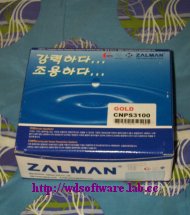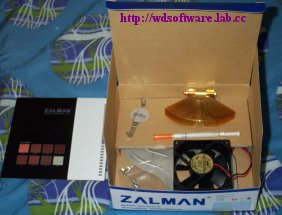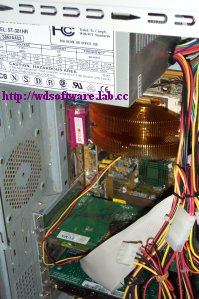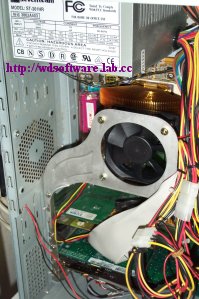Now Accepting Zalman HS Orders
Posted by Wesley on
There has been many requests for ordering Zalman's heatsinks. Those who were waiting may now wait no more. I have set up an international order page for you.
| CPU: | AMD Duron 650@945 & AMD Athlon(T-bird) 750@1113 |
| M/B: | Asus A7V (VIA KT133 chipset) - VIA 4-in-1 v4.27 - |
| Cooling: | PAL6035 & CNPS3100 |
| RAM: | 256MB x 1 OCZ PC150 CAS2 SDRAM |
| Video: | SUMA GeForce2 GTS 32MB - NVIDIA Det. v6.34 - |
| OS: | Windows 2000 - Version 5.00.2195 SP1, English - |
| Else: | Motherboard Monitor 5.03, Seventeam ST-301HR PSU |
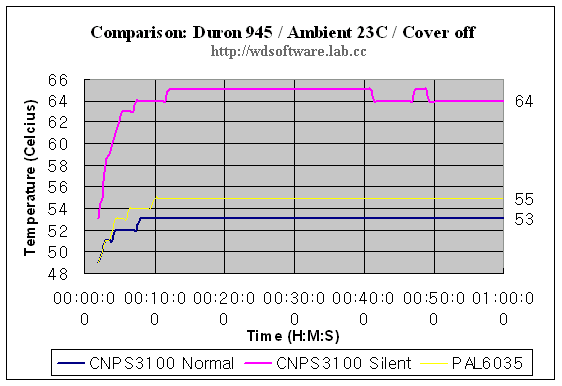
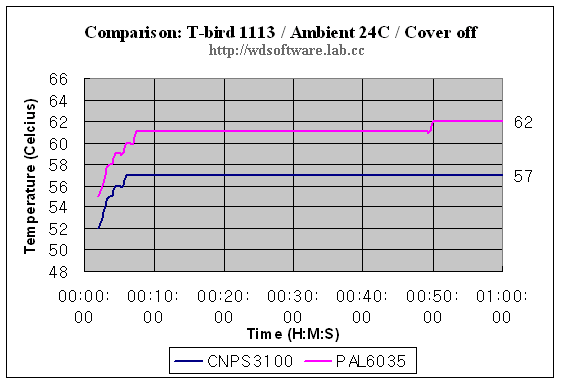
 The ambient temperature was closely monitored with thermometers such as this Hydro-Quebec thermometer that's been rolling around since my Canadian days and I've taken care to make sure that the temperature remained constant during testing to prevent measurement errors.
The ambient temperature was closely monitored with thermometers such as this Hydro-Quebec thermometer that's been rolling around since my Canadian days and I've taken care to make sure that the temperature remained constant during testing to prevent measurement errors.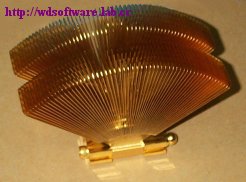
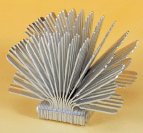 CNPS3100 is the latest in the product lines of the Zalman HSFs, just released in the December of 2000. You can read its news release here in Korean (English product page is here). Zalman has yet to revamp its site to provide multilingual support, so the English page is my translation of the Korean counterpart. FHS was initially made in aluminium with a few fins, but over time, to increase its cooling performance, the recent models are made in pure copper. Pure copper rusts over time, so the latest FHS included in CNPS3100 is coated in either pure gold or chrome to prevent rust. The model tested here is the more expensive(and good-looking) version, the CNPS3100-Gold. The Gold version costs about US$10 more than the Chrome coated version. The shape of the heatsink, the FHS, should no doubt be an eye-catcher for most of you.
CNPS3100 is the latest in the product lines of the Zalman HSFs, just released in the December of 2000. You can read its news release here in Korean (English product page is here). Zalman has yet to revamp its site to provide multilingual support, so the English page is my translation of the Korean counterpart. FHS was initially made in aluminium with a few fins, but over time, to increase its cooling performance, the recent models are made in pure copper. Pure copper rusts over time, so the latest FHS included in CNPS3100 is coated in either pure gold or chrome to prevent rust. The model tested here is the more expensive(and good-looking) version, the CNPS3100-Gold. The Gold version costs about US$10 more than the Chrome coated version. The shape of the heatsink, the FHS, should no doubt be an eye-catcher for most of you.| Specification | |
|---|---|
| Dimensions(mm): | 110 x 52 x 65 |
| Mass (grams): | 296 |
| Cooling Fan: | Adda 80mm |
| Fan Speed(rpm): | 3000 ~ 1500(Silent) |
| Fan Power(cfm): | 38.6 ~ 20.2(Silent) |
| Thermal Resistance: | 0.28 ~ 0.35(Silent) C/W |
